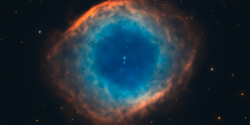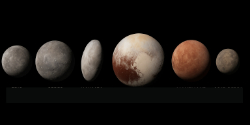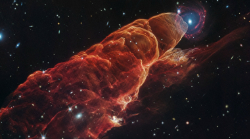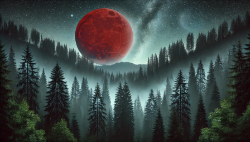 |
|
 News News | | STARGAZING NEWS: Oct 20-Orionids Meteor Shower, Oct 21-New Moon, Oct 29-First Quarter Moon, Nov 1-Saturn-Moon Conjunction (3°) ➜ | 
Earth — Made for Stargazing (9/21/25)
Earth sits in a cosmic “sweet spot.” Our position and motion give us the chance to marvel at the Milky Way from within, while still allowing us to peer outward to the grand universe beyond — a dual perspective that makes stargazing here uniquely spectacular.
➜ |
| 
How to Watch a Star Die (8/23/25)
One day our Sun will draw its last breath, and in doing so, it will paint the heavens with a majestic planetary nebula — a cosmic farewell glowing across the galaxy. Even though we won't be be around to see our Sun die, we can watch other Sun-like stars that are dying now. Here's how... ➜ |
| 
3I/Atlas: An Interstellar Visitor from Far Beyond (7/3/25)
If you’ve ever looked up at the stars and wondered if there might be alien visitors, you’re in for a surprise. One of the newest and most exciting discoveries is a mysterious visitor called 3I/Atlas. What makes it special? It’s not from around here. Literally. ➜ |
| 
Incredible new Observatory: Vera C. Rubin (6/21/25)
Have you ever wondered what it would be like if the night sky revealed itself in motion like watching a movie? Imagine watching planets and asteroids moving about, comets streaming debris into space, stars exploding and more all playing out in incredible resolution. The brand new Vera C. Rubin Observatory in Chile is making this a reality. ➜ |
| 
A New World in the Shadows: Dwarf Planet 2017 OF201 (6/3/25)
In the quiet outskirts of our solar system, astronomers have discovered a new member of the growing family of dwarf planets—2017 OF201. This icy, distant world joins the likes of Pluto, Eris, Haumea, Makemake, and Ceres. ➜ |
| 
JWST captures a Cosmic Newborn's first 'Cry' (3/25/25)
Check out this incredible image of Herbig-Haro 49/50 taken by the new James Webb Space Telescope (JWST)! It’s not just beautiful, it’s a cosmic drama unfolding right before our eyes.
➜ |
| 
Saturn has 274 Moons! (3/14/25)
Astronomers recently found 128 more moons orbiting Saturn, bringing its total to 274 moons! That’s more moons than all the other planets in our solar system combined.
➜ |
| 
2025 March 13: Total Lunar Eclipse (1/31/25)
In 2025, a total lunar eclipse will be visible in the Pacific Northwest on March 13th. The Moon will turn red as it passes through Earth’s shadow, creating a breathtaking sight. UPDATE: pic from the eclipse! ➜ |
| |
|
|
 |
|



